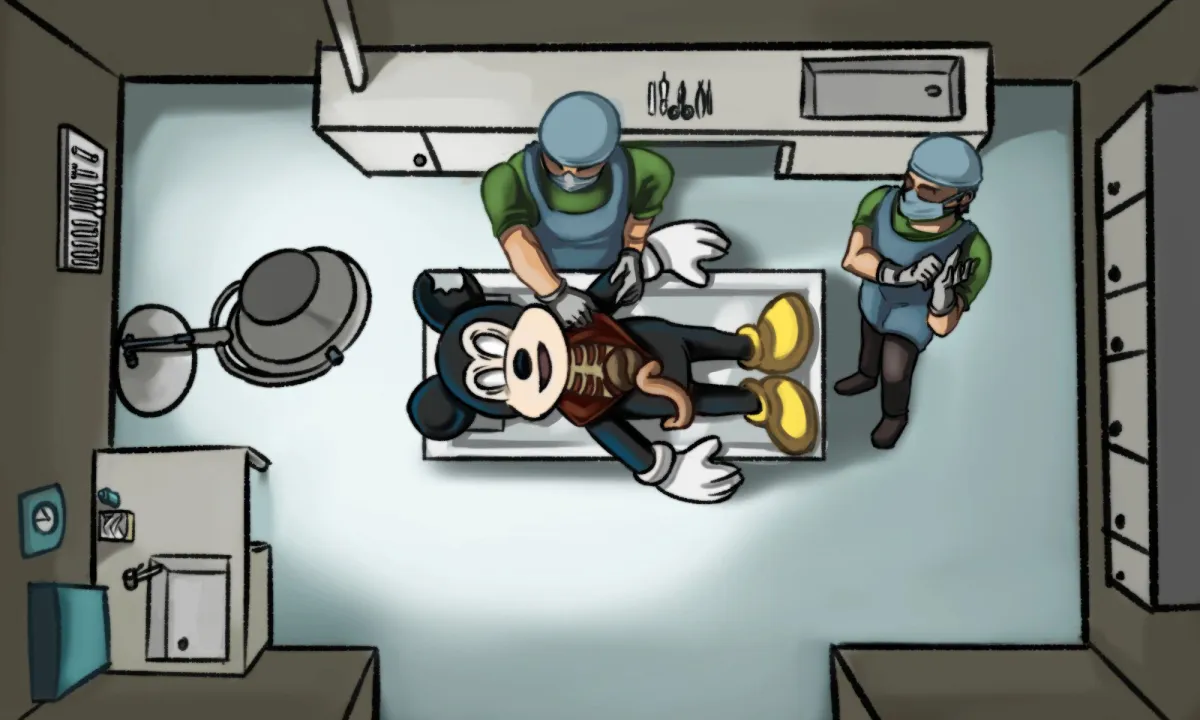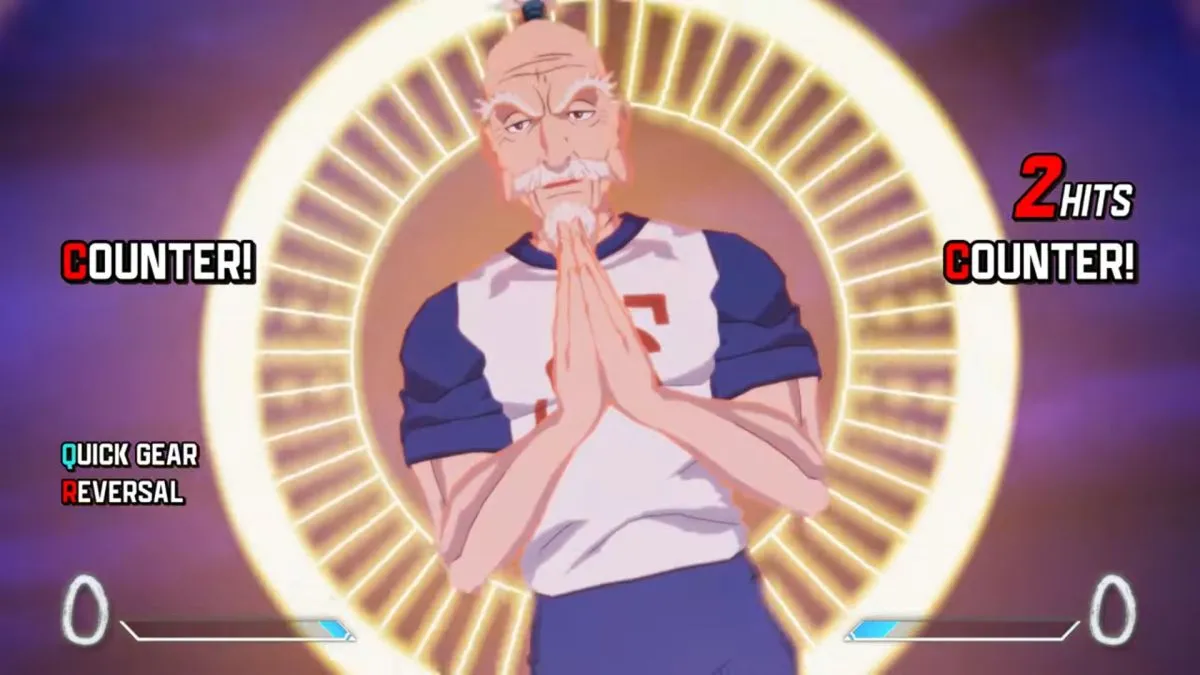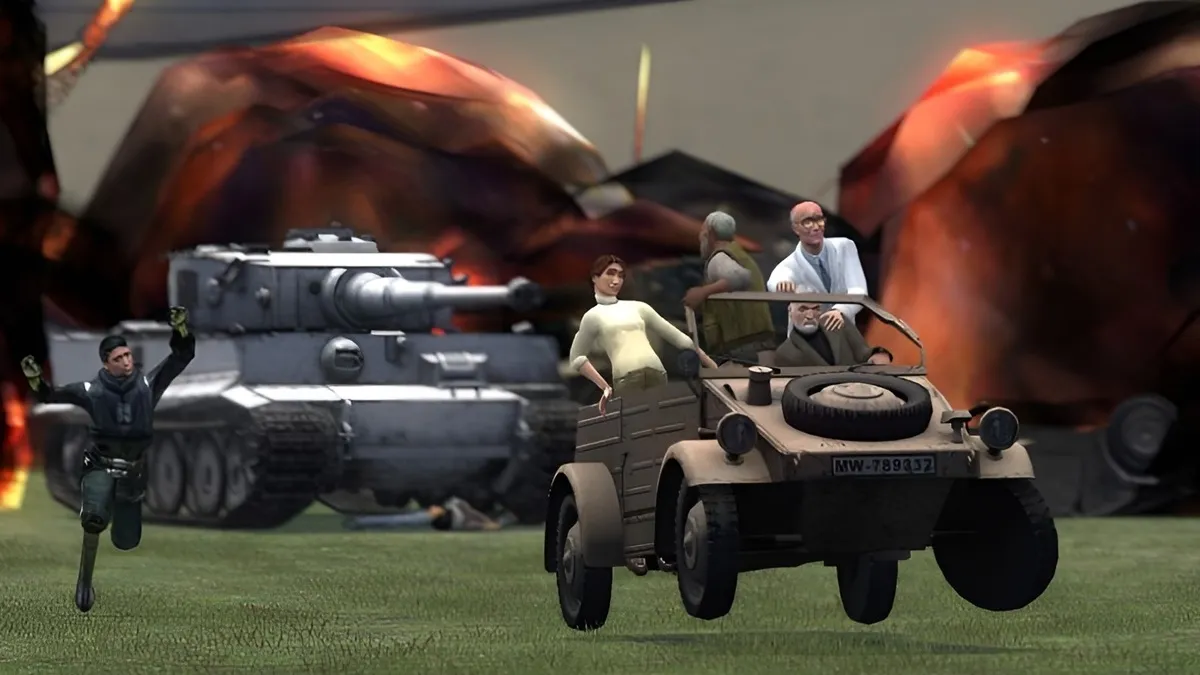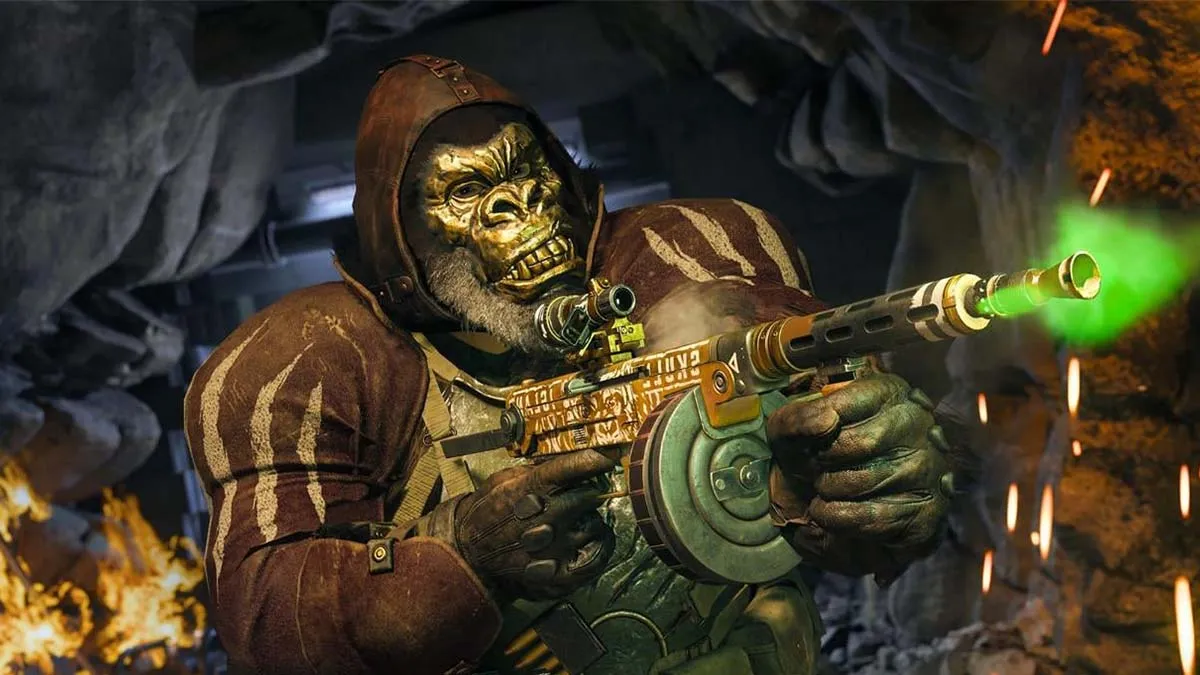Paint it black
Have you ever heard an idea that you knew just couldn’t fail? Something so spectacular and creative, and yet so blatantly obvious, that there would be no way it could possibly end up as anything other than an absolute triumph? Back in 2009, I was sure that Disney and Junction Point Studios had come up with a flawless formula as that was the year the world got its first substantial look at Disney Epic Mickey.
It was everything somebody like me could want at the time: a Wii exclusive from a third-party developer lead by an accomplished game producer that would offer us a new look at the classic cartoon character. Heading toward its 2010 debut, all signs pointed to this being, perhaps, one of the biggest new franchises in the industry. I pre-ordered the collector’s edition, fully expecting some sort of religious experience from the game.
Instead, what I got was a lesson in hype and how easy it is to set oneself up for eventual disappointment. I tore into Epic Mickey like a doctor had just given me a week to live, but by the time I reached Lonesome Manor, I had to put the controller down. The idea that I’d fall madly in love with this game gradually thinned away like many of the walls of the Wasteland. I was bewildered by the lot of it. After a year of buzz and excitation for a Mickey Mouse game that wasn’t aimed at the Elementary School crowd, I sat there staring at my television asking how could this have gone so wrong.
Ten years later, I’m still asking that question. How could the surefire idea of “Mickey Mouse in a world of forgotten Disney characters” result in two different studios ceasing to make video games? I wanted to find out what killed this franchise, and to do so, I dove back into the thinner-soaked Wasteland to see exactly what went wrong.

It would be easy to point to Epic Mickey 2: The Power of Two as the culprit in this series’ demise, but truthfully, its problems are merely a product of what Junction Point created the first time around. The additions made in the sequel — co-op, Inkwells, voice acting, musical numbers — did it no favors in winning over those who were left unimpressed with its predecessor, but I’d argue this franchise’s death warrant was signed even before a followup was ever greenlit.
To understand where I’m coming from, we’re going to have to look at the origins of this project. For that, we need to go back to before Junction Point Studios came on board, when what would become Epic Mickey was just an idea in some Disney executive’s head to make Mickey Mouse relevant again.
It’s honestly a miracle Epic Mickey ended up as endearing as it did given its beginnings as a corporate-driven idea to rebrand Mickey Mouse as a video game hero that’d appeal to players of all ages. They also wanted to reintroduce the world to one of Walt Disney’s earlier creations in Oswald the Lucky Rabbit, which it didn’t actually own at the time. In what will remain the strangest sports trade of all time, The Walt Disney Company and NBC Universal reached an agreement where Oswald would rejoin the House of the Mouse while Monday Night Football play-by-play announcer Al Michaels would join John Madden on Sunday Night Football.
While that deal was completed in 2006, Disney had been in the process of regaining the rights to Oswald since at least 2005. That same year, Warren Spector formed Junction Point Studios and started pitching to various studios, including Disney. While none of his ideas were accepted, the executives had one of their own. They wanted him and his team to make a Mickey Mouse game, and according to the game’s official art book, the execs provided the three central pieces of what would become Epic Mickey: forgotten characters, the Wasteland, and Oswald the Lucky Rabbit. Spector agreed and got to work right away with his team, and by April of 2006, Disney approved their plan.

Junction Point’s first action would be to test the bounds of Disney’s limitations. Looking at his previous titles, Spector could go quite dark with his concept and asked his artists to draw up designs to find out where Disney would draw the line. Chances are you know this concept art well as the various images have stuck with the franchise even when Junction Point abandoned most of the ideas they illustrated. A lot of great artwork originated in this early stage of development, including the “Paint Thinner Beach” piece and my personal favorite, “Epcot and Hollywood Studios on the Back of a Whale.” The images presented a vision of Disney not seen outside the pages of DeviantArt, a reimagined world of forgotten critters and mechanical monstrosities possessing the faces of characters known and loved around the world. Nightmare-inducing would be a good way to describe it; Mickey Mouse by way of H.R. Giger.
The problem with this approach to concept art, to see how far you could go with it, is that video game art has a tendency to leak, and when it did throughout 2009, it set up certain expectations for what we’d see in the final game. I don’t think any person was under the impression the Nintendo Wii could adequately recreate those images, but goddamn if I didn’t hold out hope that they were trying.
Disney Epic Mickey would ultimately be revealed in the pages of Game Informer in October 2009. The issue finally gave those enamored with the concept art an inkling of an idea of what the game would be. According to the many articles posted on it, Epic Mickey would feature a new take on Mickey Mouse from the man who brought us Deus Ex, visiting a tarnished land inhabited by Disney characters and attractions that people and time had forgotten. It would feature a painting and thinning mechanic where players could literally finish the world around them or thin it down. And it would be dark, a far more grim take on the Mouse than had previously been seen before.
That issue hit a little more than a year before the game’s ultimate release, and in that time, a lot of what had been planned for the title would ultimately be changed or cut. An original version of the narrative, reported by Eurogamer in 2009, had Oswald as the ultimate villain, posing Mickey’s journey as one of survival through Oswald’s revenge. Eurogamer also detailed several concepts that aren’t seen in the final product, including the use of different color paint and additional tools like pencils and erasers. There was also an idea in place to change Mickey’s appearance based on how the player would control him in a system known as “playstyle matters.” Levels depicting thinner-soaked versions of Wonderland and Jack and the Beanstalk were cut but still found their way into the opening cinematic.

It would be interesting to find out just why all these adjustments were made, but my gut feeling tells me it had to do with the change in platforms. Originally, Epic Mickey was in development for the PlayStation 3, Xbox 360, and PC. According to an interview with Official Nintendo Magazine, a Wii port was discussed and dismissed before development moved over to the Wii in 2008 as an exclusive title for the platform.
When Epic Mickey finally did launch in November 2010, hype and expectations collided with reality. While it did score decent reviews and sell more than a million copies in its opening month — a feat for a third-party on the Wii — one has to wonder how much of a role nostalgia played in that achievement. Strip away the dark Disney veneer and what are you left with? Would you describe this game as an outstanding mix of action, platforming, and adventure gameplay, or something built with glaring issues that were covered with a captivating coat of paint?
Junction Point wanted to make an adventure game, a platform game, and an action game; it wanted to make a game that gave players a choice in how they’d proceed through the campaign and provide a moral imperative to make the right decisions even when it’s the more difficult choice to make. It wanted to do all that in a third-person 3D setting with some side-scrolling elements that reached back to the roots of the central character. Playing through Epic Mickey again, it’s easy to see how the developers failed to reach even an adequate level of execution in each of those ideas.
Let’s start with the gameplay design Junction Point settled on for the title. There was a lot of speculation in the run-up to its launch that it would be a platform game, something to rival Super Mario. While there is platforming in it, Epic Mickey is first and foremost an adventure game. Everything here is a quest that has to be completed, from the required tasks you need to advance through the story to the optional ones you get from the various cartoon NPCs.

A lot of these quests — particularly those that are optional — are basic fetch quests tasking Mickey with finding items or certain characters who’ve lost their way. Some make very basic use of the paint and thinner mechanism, such as erasing walls to find hidden items. Others still tie into the morality system and how you choose to go about beating the game’s few boss fights.
Most of these quests amount to nothing more than diversions to get you to play longer and explore as much of the game as you can. However, it’s those tasks you have to complete to beat each area of the game that have me questioning the design decisions made here. Because player choice is always stressed without ever giving players significant reason to choose one path forward over the next.
Let me give you an example. In Notilus, one of the 3D stages you complete in the Tomorrow City section of Wasteland, you’re tasked with raising the Nautilus from 20,000 Leagues Under the Sea. You can do this in two different ways: paint the gears to rotate the platforms on two towers to raise it yourself, or free a Gremlin who will do it for you. The latter option is by far the easiest and most efficient way to complete this quest.
Throughout Epic Mickey there are situations just like this and it’s not uncommon to be attempting to clear something yourself only to inadvertently free the Gremlin that finishes the task for you. I mean, if you’re going for the good ending, it’s not out of the question to believe you need to free every Gremlin to get it. I get the idea of giving players a choice in how to go about puzzle solutions and why that might be enticing. It’s just these options are never equal in the amount of effort and critical thinking it takes to complete them. For many of this game’s challenges, it feels like the idea of having multiple solutions was discussed but the developers eventually landed on a design document where Solution B would always be “Have the Gremlin do it.”

This wouldn’t be a big deal if these situations didn’t make up an abundance of what’s considered gameplay in Epic Mickey, but they do. Yes, some areas don’t have any Gremlins that’ll do the work for you, but even in those instances, the compact nature of each area severely limits how creative the designers can get in making compelling quests. There may be a fork in the road where you get to pick your way forward, but more often than not, your choices are limited to simple or simpler. There are some inventive aspects to the gameplay, such as conjuring a television set that captivates your enemies enough that you can sneak past them, but for the most part there isn’t anything here we haven’t seen done better in other titles. And that includes the morality system.
Again, there is some ingenuity to be found here, particularly when you go thinner crazy and Mickey starts dripping ink like a leaky faucet. But the morality system is too basic in its implementation. Use paint to make the bosses and enemies your friend or embrace your malevolent side by erasing them with thinner. It’s all too white and black and the ensuing results of your actions are equally as stark. The fact that every area you visit resets to its original state when you leave does the game no favors in making it seem like your actions are of any real consequence.
If anything, the morality system works against the idea that this is supposed to be a cartoon world as regular cartoon antics are often treated as being bad when really it’s just part of the harmless fun that makes cartoons worth watching. Launching a character with a catapult or dropping a safe on someone’s head is pretty standard animated fare, but here it’s categorized in the same grouping as damning a group of pirates to an animatronic life or drowning the It’s A Small World Clock Tower in a pool of thinner. Spector repeatedly spoke of the old Mickey Mouse and how he was a bit of a mischief-maker. While that’s true, going the “thinner route” of Epic Mickey doesn’t really feel like making mischief. Rather, it comes across as the Disney-equivalent of killing Little Sisters in Rapture.
If the adventure and morality gameplay of Epic Mickey do it no favors, its platforming portions seem to be actively working against it. Rather than tackling a purely 2D or 3D adventure, Junction Point sought to mix it up with the main areas of Wasteland appearing in 3D and the transitional levels between the different worlds cleverly designed as side-scrolling stages modeled after Mickey’s old cartoon shorts. When I first ventured through these Projector Screen levels, it was inspiring to see how the developers transformed something like Steamboat Willie or Mickey’s Mechanical Man into a platform stage.
For whatever reason though, Junction Point thought players wouldn’t mind replaying these levels multiple times. Because each time you travel from one area of the Wasteland to another, you’re forced to go through these Projector Screen stages even if you’ve already completed them. On its face, that’s just not a good idea, but its implementation is far worse when you consider that adventure game aspect of the title. Some missions will send you to multiple areas, forcing you to play through these levels several times in a short span.

Take Damien Salt and his Gather the Flowers quest, for instance. To complete it, you need to travel from Ventureland to Mean Street to Ostown, and then back to Mean Street and Ventureland. That mission alone will have you playing two of these Projector Screen levels, Thru the Mirror and Jungle Rhythm, twice when you have already gone through each of them at least once at this point. Sure, you go through the levels forward or backward depending on which way you’re traveling, but it’s a ridiculous amount of forced repetition to put on players in such a small amount of time. Not only is it tedious, but the platforming wasn’t really up to the standards of its era.
Epic Mickey was released in 2010. Do you know what else released that year? Super Mario Galaxy 2 and Donkey Kong Country Returns, with the latter arriving just days before this game’s debut. I know it’s tough to stand out when compared to two titles as exceptionally crafted and tightly controlled as those, but the actual design of Epic Mickey’s stages for the purposes of platforming didn’t feel fresh or interesting, but rather quite antiquated.
Many of the 3D levels contained some of the more burdensome stage design concepts from the PS2/GameCube/Xbox era of licensed platformers. Throughout the 3D worlds of the Wasteland, you have to contend with surfaces with jagged edges you could slip right off and invisible walls that prevent creative solutions. Mickey himself doesn’t really have any weight to his movement or jumps, but he also tends to drop like a rock and his ability to grab onto ledges feels predetermined in all the wrong ways. As for the 2D Projector Screen levels, Mickey has a “floaty” quality about him that doesn’t blend well with the often misleading animal platforms of these stages. There is some cleverness to be found in painting platforms you need to jump on, but it’s nothing we haven’t seen in previous games like Max and the Magic Marker or Drawn to Life.
The lack of strong fundamentals in Epic Mickey‘s platforming, adventure concepts, and morality system spills over into the actual designs of its levels and worlds. Most sections of the game are pretty small and many only require you to finish one or two quick tasks to proceed to the next area. The brevity in which you complete each of these sections not only creates pacing issues for the whole adventure but it can also feel like you’re being rushed through the game before you realize how lacking in creativity some of these areas are. Spend only a minute or two in Tomorrow Square and you might think it’s not that bad. Anything longer and it might start to look awful sparse and uninteresting.

It’s a fundamentally flawed experience from top to bottom, from the way you control Mickey to the way you complete objectives to the way the game forces punishes you if you inadvertently forget to accept a quest. At its root, this is an unexceptional game, and that’s before I even bring up the camera. The notorious Epic Mickey camera that made everything you wanted to do in this game awkward and difficult. Its preset positions did very little to showcase the levels and obstacles that stood before the player. Mapping the camera controls to the directional pad made them troublesome to reach depending on the size of your hand. In my experience, frequent use of the C button on the nunchuck was the only way to make it through the Wasteland. It is without a doubt the worst camera I’ve ever had the displeasure of using from a major third-party developer and unfortunately for Epic Mickey, it’s one of the aspects most associated with the series.
Maybe it was the sudden shift to a less powerful platform or maybe it was because Junction Point bit off a bit more than it could chew, but my repeated trips through the Wasteland have shown me a game with ideas that were never fully formed before being presented to players. You have all of these genre concepts existing in a world that is not designed to allow them to meet their full potential, resulting in an experience that would be bland as hell if not for the greatness of its art direction. Credit must be given to the amazing artists at Junction Point for bringing the Wasteland to life. They did a magnificent job of working within the constraints of Disney and the restrictions of the Wii to create a spectacular-looking game. Make no mistake, Epic Mickey has some of the best art direction of its era. Not just on the Wii, but across the entire seventh generation of consoles.
But that art only masked a title that was nowhere near worthy of the attention it was given before it launched. Even with its astronomical sales, I highly doubt a franchise could flourish when the foundation it’s built upon is as shaky as this and truly, it didn’t take long for Epic Mickey to crumble. The direct sequel fixed very few of the issues listed above, and, in fact, made it worse with even more inconsequential areas, poorer gameplay, godawful partner AI, and platforming that felt about eight years behind the curve. Even the DreamRift-developed 3DS spin-off, Epic Mickey: Power of Illusion, couldn’t escape the awful stank of this series with gameplay elements that were somehow even more misguided than what Junction Point cooked up (though it did have the superior narrative concept).

While it might not be what ultimately led to the sequel and the spin-off failing, one question I’ve always had about these games was their continued use of the paint and thin mechanic. I understand that, by this point, it was the gameplay element that separated Epic Mickey from other games, but it really didn’t make sense in the context of either title. Player choice and the concept of good and evil made sense in the original game as it blended in well with its story. Mickey, as the reason why the Wasteland looked the way it did, was on a mission of redemption, and his actions affect how the Wasteland would turn out in the end. When taken in step with the narrative, that element of the gameplay fit snuggly in like one of Mean Street’s many cogs.
In Epic Mickey 2, the narrative is nearly as deep and Mickey’s involvement in the situation troubling the Wasteland isn’t as personal. As such, the paint and thinner mechanic isn’t as necessary to tell the game’s story and seem as though they’re present solely because that’s just what the players should expect at this point. The same goes for Power of Illusion.
Would dropping the paint and thinner mechanic have resulted in much better games? Probably not, and I guess it really doesn’t matter now. Spector only had two years between the release of Epic Mickey and its sequel to turn things around and when having to account for additional hardware to develop for, it’s clear that wasn’t enough time to reconsider if the direction they were taking the series in was the correct one. Both the sequel and the spin-off were lambasted upon release, and Junction Point was shut down a little more than two months after The Power of Two cratered at retail while DreamRift hasn’t released a game since.
Someday I’d love to have a one-on-one with Warren Spector to talk about this game because, despite everything I’ve written here, it still holds a special place in my heart. I know it’s bad, and I can tell you exactly why it doesn’t work, but I’m still in love with the potential of Epic Mickey imagined in those pieces of concept art from all those years ago. I will never stop being fascinated with this game, and one day I’d love to see a plucky young developer get a chance to reimagine it, Final Fantasy VII Remake style. But until that happens, I’ll keep playing and hating and loving every minute of Epic Mickey.
[A special thank you to Triggerpigking for providing the headline image.]





